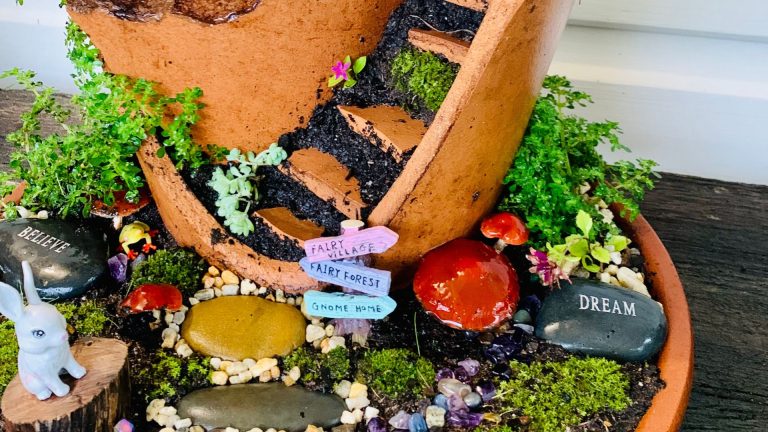How to Create a Stunning English Cottage Garden in Your Own Backyard
There’s something undeniably enchanting about an English cottage garden. With its abundant blooms, fragrant herbs, and charming, slightly wild appeal, an English cottage garden feels like something straight out of a storybook. Imagine a lush, vibrant space filled with climbing roses, lavender, hollyhocks, and fragrant herbs, all blending together in a wonderful symphony of color and scent. If There’s something undeniably enchanting about an English cottage garden. With its abundant blooms, fragrant herbs, and charming, slightly wild appeal, an English cottage garden feels like something straight out of a storybook. Imagine a lush, vibrant space filled with climbing roses, lavender, hollyhocks, and fragrant herbs, all blending together in a wonderful symphony of color and scent. If you’ve ever dreamed of creating your own piece of garden paradise, an English cottage garden might just be the perfect style for you.
In this blog post, we’ll guide you through the essential steps to create your very own English cottage garden—from choosing the right plants to designing your garden space. With the right approach, you can transform your yard into a charming, colorful retreat that brings joy year after year.
What is an English Cottage Garden?
An English cottage garden is a timeless, romantic style of garden characterized by an informal, abundant planting scheme. Unlike formal gardens that often focus on symmetry and neatness, English cottage gardens are designed to feel free-flowing and natural, with plants growing in a seemingly chaotic but carefully curated way.
The main goal of an English cottage garden is to create a lush, colorful, and fragrant space that feels lived in, cozy, and welcoming. You’ll find a blend of flowers, vegetables, herbs, and sometimes even fruit, all interwoven together. These gardens often feature winding pathways, climbing plants, and rustic garden features like benches, arbors, and fences.

Steps to Create an English Cottage Garden
Creating your own English cottage garden doesn’t have to be overwhelming. With a little planning and creativity, you can transform your garden into a beautiful, blooming oasis. Here’s how to get started.
1. Start with a Vision
The first step to creating an English cottage garden is envisioning what you want your garden to look like. While the idea is to have a natural, free-flowing garden, it’s helpful to have an overall theme or vision in mind to guide you as you select plants and design your space.
- Consider Your Space: Take a good look at your garden space and think about how you want it to feel. Do you want a secluded corner full of fragrant herbs? Or perhaps a sprawling garden with mixed flower beds? Maybe you want a perfect balance of flowers and vegetables. It’s important to choose plants that will thrive in your climate and soil, so research what’s best suited for your area.
- Think About Color and Texture: English cottage gardens are known for their rich mix of colors, from soft pastels to vibrant hues. Decide on a color palette for your garden that reflects your personal style—whether it’s romantic purples, pinks, and whites, or bold reds, yellows, and oranges.

2. Prepare the Soil
The soil is the foundation of any successful garden, and it’s especially important in a cottage garden. Rich, well-draining soil will ensure your plants grow strong and healthy. Start by preparing your garden bed:
- Test the Soil: You can have your soil tested to determine its pH and nutrient levels. This helps you understand whether you need to amend the soil with compost or organic matter.
- Add Organic Matter: English cottage gardens thrive in rich, loamy soil. Work in plenty of compost or organic matter to improve the soil structure. This will not only help with drainage but also provide your plants with essential nutrients.
- Create Raised Beds (if necessary): If your soil is heavy or poorly draining, consider building raised garden beds. This allows you to create a custom soil mix that’s perfect for your plants and makes it easier to control the growing environment.
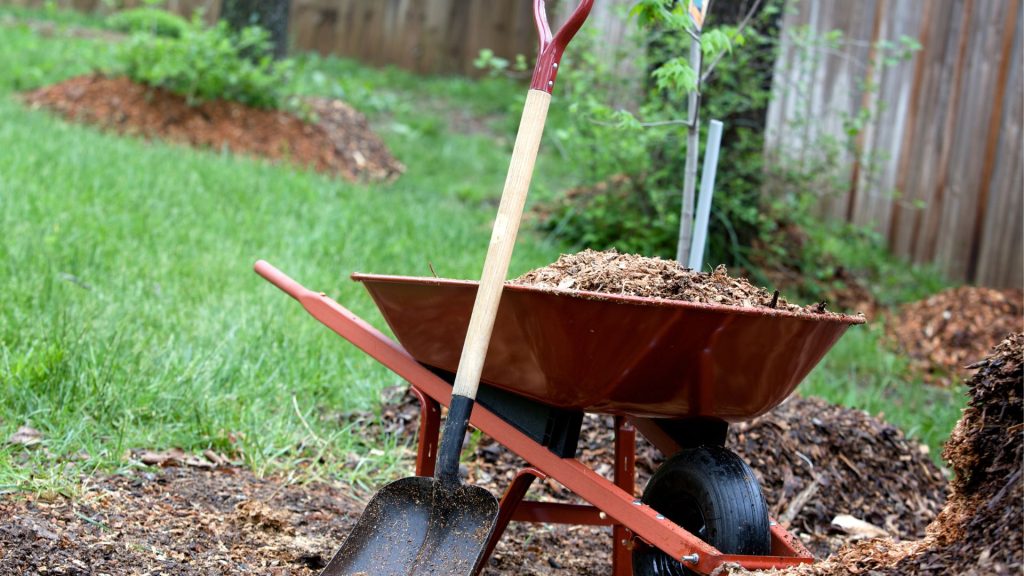
3. Design Your Garden Layout
One of the most charming aspects of an English cottage garden is the informal, unstructured layout. However, that doesn’t mean there’s no planning involved! Here are some tips for designing your garden:
- Use Layers: The key to creating a lush, cottage-style garden is layering your plants. Place taller plants like delphiniums or hollyhocks in the back of the garden, followed by medium-height plants like lavender or coneflowers, and finish with shorter plants like daisies or creeping thyme in the front. This creates depth and interest, allowing each plant to shine.
- Create Winding Paths: A hallmark of English cottage gardens is the use of winding, meandering pathways that invite visitors to explore the space. You can create these paths using gravel, stone, or even reclaimed bricks. The paths should feel natural, so don’t worry about making them perfectly straight—let them curve and wander.
- Incorporate Vertical Elements: Climbing plants like roses, clematis, and honeysuckle are key features of English cottage gardens. Install trellises, arches, or fences to support these vertical plants. These elements help add height and visual interest while also providing structure.
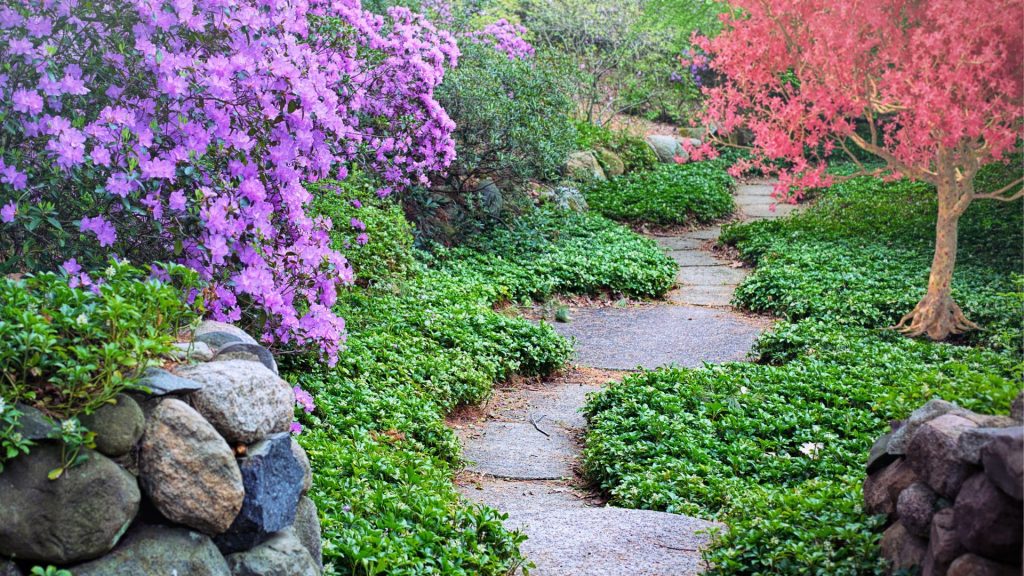
4. Choose the Right Plants
The beauty of an English cottage garden lies in the diversity of its plantings. You’ll want to select a variety of plants that will provide color, texture, fragrance, and even functionality. Here’s a list of classic cottage garden plants to include:
- Flowers:
- Roses: Roses are a must-have in any English cottage garden. Climbing roses are perfect for trellises or fences, while bush roses can be used for a more formal look.
- Peonies: These lush, fragrant flowers bloom in late spring and early summer, adding a touch of romance to your garden.
- Lavender: Lavender is a fragrant, low-maintenance plant that thrives in full sun and adds a touch of elegance to your garden.
- Delphiniums: With their tall, spiky blooms in shades of blue, purple, and white, delphiniums create a dramatic vertical element.
- Daisies: Simple and cheerful, daisies are a cottage garden staple that provides a carefree look.
- Herbs:
- Thyme: Thyme makes a wonderful ground cover and releases a lovely scent when stepped on.
- Rosemary: This fragrant herb is perfect for adding both texture and aroma to your garden.
- Chives: Chives are not only practical for cooking, but they also produce beautiful purple flowers that attract pollinators.
- Vegetables & Fruits:
- Tomatoes: Tomatoes can be both functional and ornamental, with colorful fruits that grow on charming vines.
- Strawberries: Plant strawberries along pathways or in containers for an edible yet beautiful touch.
- Radishes: These fast-growing vegetables can be tucked into flower beds or vegetable patches.

5. Add Garden Features
An English cottage garden isn’t complete without a few charming garden features. These elements help bring personality and interest to the space, making it feel like a cozy, inviting retreat.
- Arbors and Trellises: Adding an arbor or trellis is a great way to grow climbing plants like roses or sweet peas. These structures create a sense of intimacy and draw the eye upwards.
- Birdbaths and Fountains: A birdbath or small fountain can attract wildlife, adding a sense of peace and tranquility to your garden. The sound of water also adds a calming atmosphere.
- Rustic Garden Furniture: Include a bench or chair where you can sit and enjoy your garden. Wrought iron or wooden furniture adds a rustic charm that perfectly complements the English cottage aesthetic.
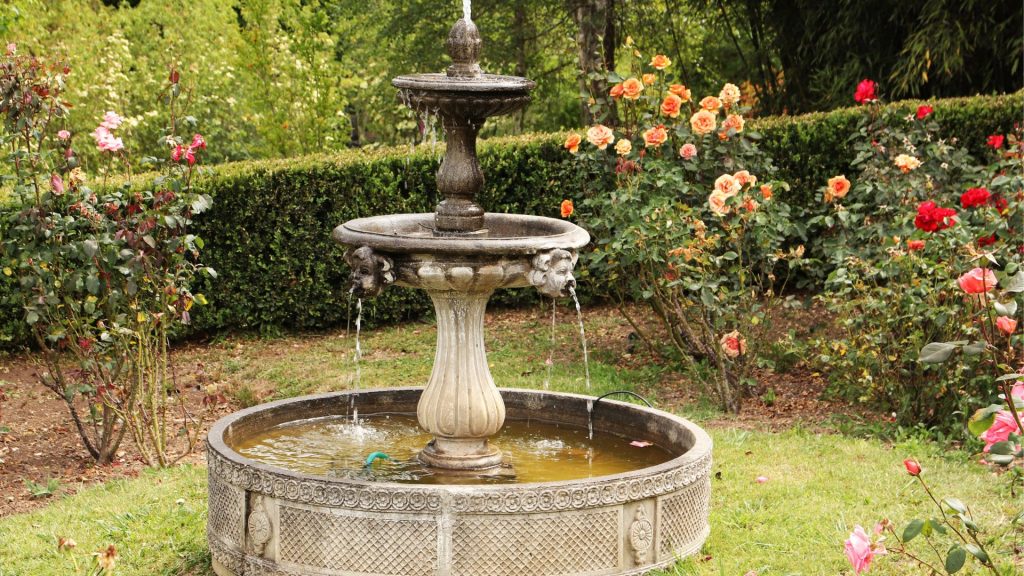
6. Consider Maintenance and Care
One of the great things about English cottage gardens is that they’re designed to be low-maintenance once established. However, there are still some ongoing tasks you’ll need to keep up with:
- Pruning: Regularly prune roses, climbing plants, and perennials to encourage healthy growth and maintain their shape.
- Deadheading: Remove spent flowers from plants like daisies and roses to promote continued blooming throughout the season.
- Mulching: Apply a layer of mulch around your plants to retain moisture, suppress weeds, and keep the soil healthy.
- Watering: Make sure to water your plants regularly, especially during dry spells. Installing an irrigation system can help ensure your garden gets consistent water.
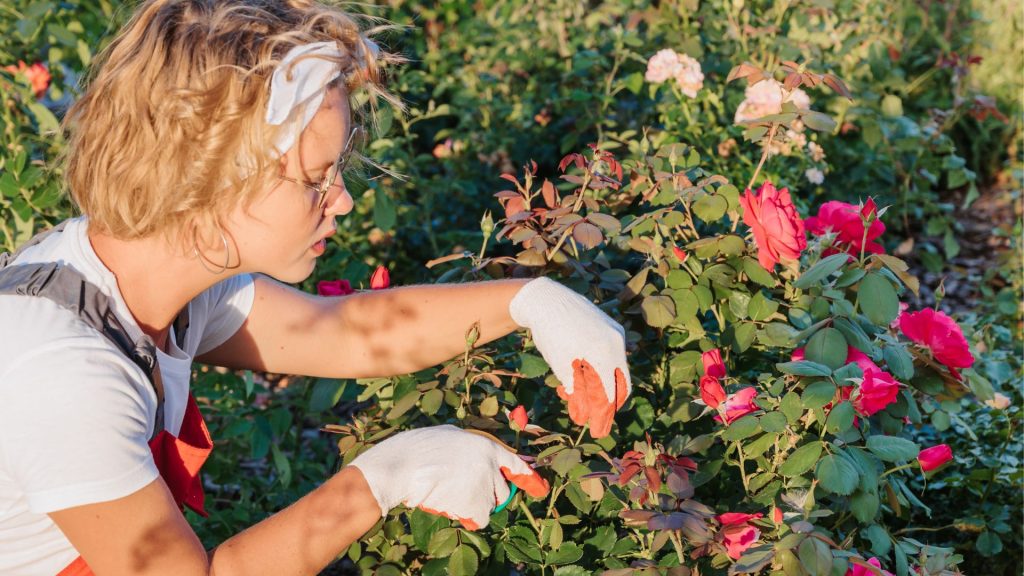
My Sunny Thoughts
Creating an English cottage garden is a labor of love, but the end result is truly worth the effort. With its dreamy mix of flowers, herbs, and rustic charm, your garden will become a peaceful retreat—a space where you can escape, relax, and enjoy the beauty of nature.
Are you ready to start your own English cottage garden? What plants or features are you most excited to add? Share your thoughts, ideas, or any questions in the comments below! I’d love to hear about your gardening plans.







